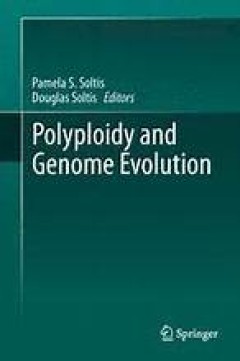Filter by

The Entrepreneur in Rule-Based Economics
This volume brings together three areas of interest: the rule-based approach, the entrepreneur, and Japan as an empirical application. It highlights the advantages of the rule-based approach for economic analysis by linking different methodological underpinnings. Using these, the author exemplifies how rule-based economics allows a systematic analysis of the entrepreneur as the key figure in br…
- Edition
- 1
- ISBN/ISSN
- 978-3-319-62779-3
- Collation
- Economic
- Series Title
- -
- Call Number
- 330

The Anatomy of Entrepreneurial Decisions
The creation, success and long-term survival of enterprises are fundamentally linked to the effectiveness of decision-making processes and negotiation capabilities. This book provides an overview of research into how decisions permeate entrepreneurial ventures throughout their lifecycle. A multidisciplinary approach combining psychology, sociology and political science is used to investigate ho…
- Edition
- 1
- ISBN/ISSN
- 978-3-030-19685-1
- Collation
- Manajemen
- Series Title
- -
- Call Number
- 658

The Biology of the Avian Respiratory System
The central focus of this book is the avian respiratory system. The authors explain why the respiratory system of modern birds is built the way it is and works the way that it does. Birds have been and continue to attract particular interest to biologists. The more birds are studied, the more it is appreciated that the existence of human-kind on earth very much depends directly and indirectly o…
- Edition
- 1
- ISBN/ISSN
- 978-3-319-44153-5
- Collation
- Biologi
- Series Title
- -
- Call Number
- 570

Kierkegaard After the Genome
This book brings Søren Kierkegaard’s nineteenth-century existentialist project into our contemporary age, applying his understanding of “freedom” and “despair” to science and science studies, queer, decolonial and critical race theory, and disability studies. The book draws out the materialist dimensions of belief, examining the existential dynamics of phenomena like placebos, epigen…
- Edition
- 1
- ISBN/ISSN
- 978-3-319-57981-8
- Collation
- Biologi
- Series Title
- -
- Call Number
- 570

Polyploidy and Genome Evolution
Polyploidy – whole-genome duplication (WGD) – is a fundamental driver of biodiversity with significant consequences for genome structure, organization, and evolution. Once considered a speciation process common only in plants, polyploidy is now recognized to have played a major role in the structure, gene content, and evolution of most eukaryotic genomes. In fact, the diversity of eukaryo…
- Edition
- 1
- ISBN/ISSN
- 2012
- Collation
- Biologi
- Series Title
- -
- Call Number
- 570

The Taming of Evolution: The Persistence of Nonevolutionary Views in the Stud…
The theory of evolution has clearly altered our views of the biological world, but in the study of human beings, evolutionary and preevolutionary views continue to coexist in a state of perpetual tension. The Taming of Evolution addresses the questions of how and why this is so. Davydd Greenwood offers a sustained critique of the nature/nurture debate, revealing the complexity of the relationsh…
- Edition
- Ed. 1
- ISBN/ISSN
- -
- Collation
- -
- Series Title
- -
- Call Number
- -

The evolution of grounded spatial language
This book presents groundbreaking robotic experiments on how and why spatial language evolves. It provides detailed explanations of the origins of spatial conceptualization strategies, spatial categories, landmark systems and spatial grammar by tracing the interplay of environmental conditions, communicative and cognitive pressures. The experiments discussed in this book go far beyond previous …
- Edition
- -
- ISBN/ISSN
- 9783944675466
- Collation
- -
- Series Title
- -
- Call Number
- -

Retrograde Evolution During Major Extinction Crises
This book is the first of its kind, providing in-depth analysis of the retrograde evolution occurring during major extinction periods. The text offers a non-strictly adaptative explanation of repetition of phyla after the major extinctions, utilizing a study of seven phylogenetically distinct groups. This opens a new experimental field in evolutionary biology with the possibility of reconstruct…
- Edition
- Ed. 1
- ISBN/ISSN
- 978-3-319-27916-9
- Collation
- -
- Series Title
- -
- Call Number
- -

Reticulate Evolution
Written for non-experts, this volume introduces the mechanisms that underlie reticulate evolution. Chapters are either accompanied with glossaries that explain new terminology or timelines that position pioneering scholars and their major discoveries in their historical contexts. The contributing authors outline the history and original context of discovery of symbiosis, symbiogenesis, lateral …
- Edition
- Ed. 1
- ISBN/ISSN
- 978-3-319-16345-1
- Collation
- -
- Series Title
- -
- Call Number
- -

The Evolution of the Primate Hand
This book demonstrates how the primate hand combines both primitive and novel morphology, both general function with specialization, and both a remarkable degree of diversity within some clades and yet general similarity across many others. Across the chapters, different authors have addressed a variety of specific questions and provided their perspectives, but all explore the main themes descr…
- Edition
- 1
- ISBN/ISSN
- 978-1-4939-3646-5
- Collation
- XI, 589, 64 illustrations in colour
- Series Title
- Developments in Primatology: Progress and Prospects
- Call Number
- -
 Computer Science, Information & General Works
Computer Science, Information & General Works  Philosophy & Psychology
Philosophy & Psychology  Religion
Religion  Social Sciences
Social Sciences  Language
Language  Pure Science
Pure Science  Applied Sciences
Applied Sciences  Art & Recreation
Art & Recreation  Literature
Literature  History & Geography
History & Geography